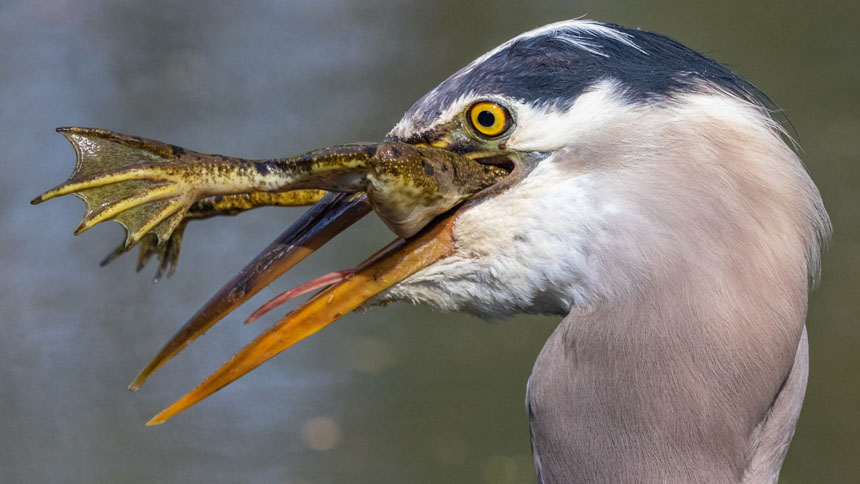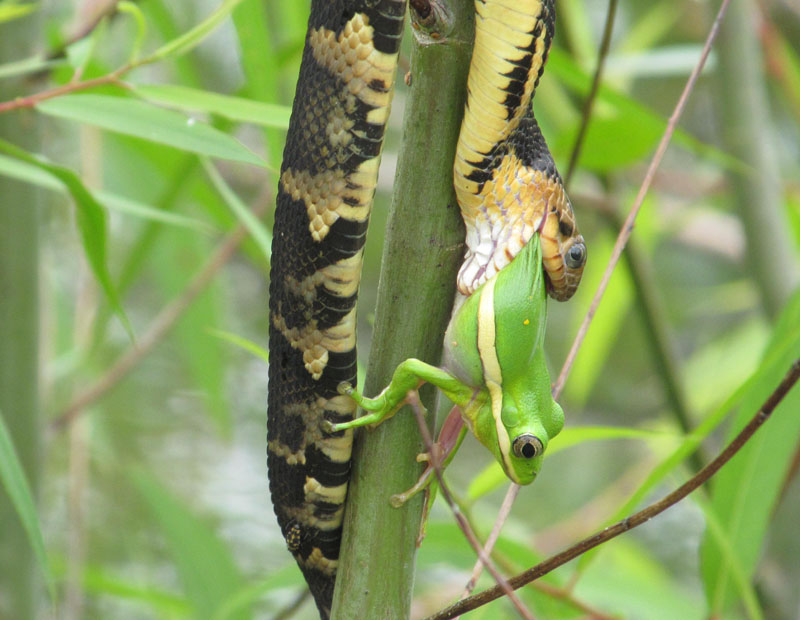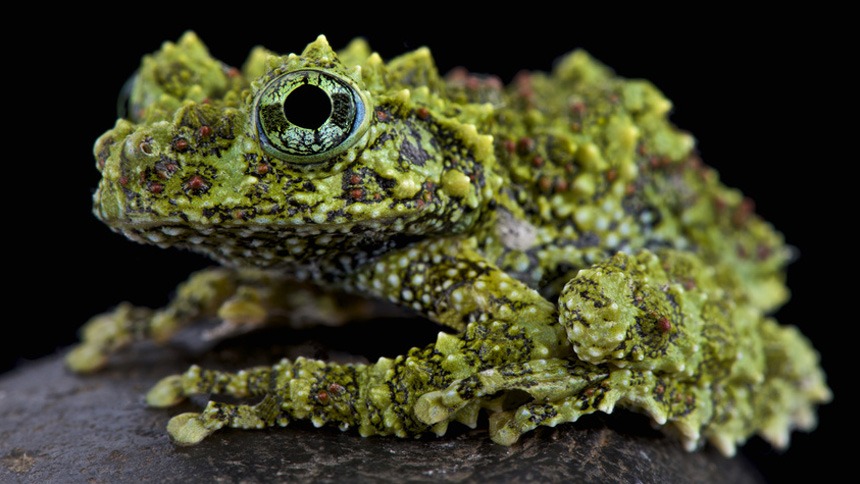
Frog Predators: What Eats Frogs?
Due to frogs’ natural abundance, it is not news that these amphibians are a common food source for a wide variety of animals. Though they are mostly being hunted for food, they actually play an important role in the ecosystem since they both act as hunters and preys.
But of course, frogs just don’t easily allow themselves to be another predator’s dinner. They have smart ways of protecting themselves in the wild.
Here is a list of the interesting defense mechanisms of frogs:
- Puffing up their bodies
- Camouflage
- Screaming
- Urinating
- Leap away from enemies
- Play dead
- Surprising their predators
With different frogs come unique techniques of defense. With that being said, it may vary from one frog to another. Even though they are of small size, they are indeed terrible.
Page Contents
Birds Eat Frogs
One of the most common predators of frogs is birds. Depending on their species, birds of some kind treat frogs as the main part of their diet while others do not. Depending on the habitat where birds live, we can tell how frequently these birds consider frogs as their diet. However, frogs that share the same habitat with birds will most likely end up as their food.
Birds have different ways how approaching frogs. It could be through hunting from the ground, catching them from the sky, or diving under the water.
Herons, for example, practice the first one. This bird waits for its turn patiently. It stays motionless and unnoticed, waiting for frogs to appear. As soon as it captures the perfect timing, it moves in a strike of lightning then pierced its beak onto the frog.
Small Animals Eat Frogs
Many animals like raccoons, coyotes, and foxes regularly eat frogs and toads. Since frogs are generally everywhere, they became an easy target for predators. Animals like raccoons are omnivores, hence frogs being part of their diet is not frequent as it is with others.
However, frogs being taken by small animals such as cats and dogs could be fatal. As we all know, there are frog species that are poisonous and are not ideal for food. Cats and dogs may display symptoms of discomfort from eating it by vomiting or getting sick.
Fish Eat Frogs
Because frogs spend a great deal of their time in the water, they often fall victim to hungry fish. Catfish, for example, has a predatory behavior – making frogs their favorite prey.
As a matter of fact, that does not only benefit fish but also the fishermen. Having frogs as bait has been in practice many years ago. But due to emerging changes that the planet is facing, frog populations have been decreasing, and using them as bait is slowly being restricted.
Countries such as Connecticut, Pennsylvania, and Minnesota still allow fishing with live bait, but several permits and licenses should apply.
So as to address this issue, many manufacturers produce lures that look and smell like live frog baits. To make it even more realistic to fish, some even have movements and flashes to trick fish into thinking that these baits are alive.
Reptiles Eat Frogs

Snakes and large lizards are known to eat frogs. These two are obviously different from each other, hence they don’t dwell together nicely.
Since snakes are the ones who live in the same habitat as frogs, snakes have better chances of posing a great threat. Them slithering on the ground and climbing trees give them a much greater edge compared to other animals.
Some Frogs Eat Other Frogs
Some frogs are cannibalistic. Yes, you read that right. As horrible as it sounds, frogs will really eat a member of their family. There are many factors as to why frogs eat their own but the most common cause is this – frogs eat their own kind when there are many frog species in the same area.
All this frog-eat-frog may seem morbid but take note – this has been backed up by studies. According to a study conducted by various researchers in South Africa with regards to frog diets, amphibians are more likely to eat other frogs where there are many species living in the same area.
People Eat Frogs
Some might find frogs gross but in other countries, people even prepare different dishes from them. Countries such as Vietnam, Cambodia, Thailand, and Indonesia hunt frogs as their food. There are only a few types of frogs that are eaten, so knowledge is a must.
Aside from dishes, others believe that frogs are effective as herbal medicine. As true to its claims, trading of these amphibians has been critical and resulted in the endangerment of its type. Goliath frog, for example, has been endangered due to this activity. To address this issue, limitations to the pet trade were implemented.
Frog Defense Mechanisms
Even though frogs are small creatures, it would be irresponsible to not protect themselves from predators who would love to eat them. And so, different types of frogs have unique ways of setting up a defense in the wild.
Here, let us have a closer look at some of the frog’s defense mechanisms to drive away predators such as birds, fish, reptiles, and even humans.
Related: 10 Ways Frogs Defend Themselves Against Predators
Camouflage

Frogs are usually well adapted to their surroundings. Them being masters of camouflage make it hard for other animals to even notice them. Some frogs can change their skin color to perfectly blend with the environment.
Other species, like the Gray Tree Frog, are capable of altering their color to better match their surroundings. This specific frog has an exemplary way of blending into the environment; making it appear as if it is not there.
Aposematic Coloration
Some species have bright colors and patterns. Those colors and patterns serve as a warning to predators that they are dangerous. This kind of self-defense brings a signal to other animals that they are poisonous and not to be eaten. A good example of this is a Poison Dart frog.
Related: How to tell if a Frog is Poisonous
Toxins
Frogs have toxins on their skin, which means they are poisonous. Most of the toxins are very mild to humans but can act as a deterrent for small animals. Other frogs have poisonous glands that secrete fluid when squeezed.
As is the case with bufotoxins found in the parotid gland of True Toads.
Summary
A variety of animals in the wild consider frogs as part of their diet. Birds, fish, reptiles, other amphibians, and even humans – they all hunt frogs for survival.
There are several factors to consider when it comes to why they are hunted as food. First, is their habitat. It is of great chance that frogs exist in areas where other animals live. With that, they easily become a target.
Birds, animals, fish, reptiles and even people eat frogs. They’re an important part of the ecosystem. Having said that, frogs put up a fight! They employ a number of defense mechanisms like camouflage, bright/vivid colorations, and toxins.

Leave a Reply